8 Laundry Room Updates to Fit Any Budget
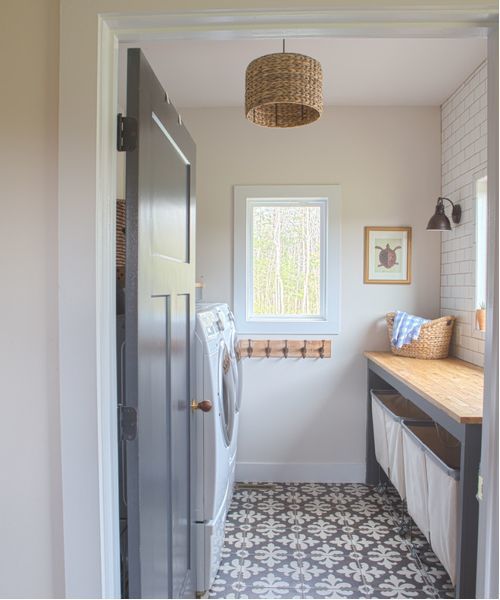

Laundry 1: Sharon Barrett Interiors, original photo on Houzz
Hoping to transform your tired laundry room into a sparkling clean, efficiently working space, but without the major costs of a full remodel? By not changing the layout or adding square feet, you can bring costs down while still making meaningful changes to your space. Use this guide to help you decide what to prioritize and what to put on the back burner, and give your laundry room an update that works with your space — whether your budget is $100 or $10,000.
If your budget is about $100: Clean, declutter and upgrade laundry baskets that have seen better days. It’s worth spending a little more for hampers that can stand up to heavy use.
Also think about which features would be most helpful to have, such as hampers on wheels, triple-sorter bins or stackable baskets that can tuck out of the way when you’re not using them.
If your budget is about $300: Clean up, get hampers and then give the walls a fresh coat of paint. A cheerful color can make your laundry room feel brand-new without breaking the budget — especially if you’re willing to DIY.
If your budget is about $500: Get hampers, fresh paint and then a soft new rug. You’ll appreciate the dose of color as much as the softness underfoot. If moisture is a concern (for example, if your laundry room is in the basement), you may want to choose a sturdy indoor-outdoor rug.
If your budget is about $700: Get hampers, fresh paint and a new rug, and then swap out the lighting.
Ample lighting is important when you’re trying to check laundry for stains and read labels, so pay attention to the recommended wattage of any light fixture you are considering — anything less than 75 watts may not shed enough light (especially if it’s the sole light source in the room).
If your budget is about $1,200: Tackle all the above, and then treat your space to some bonus storage and extras, like an ironing station, a drying rack or open shelves. If your laundry room is small, look for space-saving designs like folding drying racks, retractable clotheslines and wall-mounted ironing boards.
If your budget is about $3,500: What’s next? New appliances! A new washer and dryer can work more efficiently than older models, operate more quietly and get your clothes cleaner.
If you’re going from top-loading to front-loading machines, consider adding a countertop above to hold supplies and act as a surface for folding. Not in the market for a new set? Give your old machines a thorough cleaning to keep them running well (and smelling fresh).
If your budget is about $5,000: If you have more room in the budget, think about replacing the laundry room sink and faucet. If you’re hoping to avoid additional installation costs, choose a new model that is the same size as the old one. If you don’t already have a sink in the laundry room, adding one will require more extensive help from a plumber, and costs will be significantly more.
If your budget is about $10,000: So you have the hampers, paint, rug, lighting, storage, appliances and sink. If you still have room in the budget, think about tackling a bigger project like installing a new tile floor or a pet-washing station. Your furry friend may not thank you but sure will look cute sitting in that tub.
For more information on Windermere Evergreen, please contact us here.
Five Reasons You Need Renters Insurance

 It might be tempting as a renter to think that you don’t need an insurance policy if you’re renting an apartment or home, but not having one could cost you more than you think. A 2016 poll by the Insurance Information Institute found that only 41 percent of renters have their own renters insurance policy. Here are a few reasons why it’s important to have your own insurance policy as a renter.
It might be tempting as a renter to think that you don’t need an insurance policy if you’re renting an apartment or home, but not having one could cost you more than you think. A 2016 poll by the Insurance Information Institute found that only 41 percent of renters have their own renters insurance policy. Here are a few reasons why it’s important to have your own insurance policy as a renter.
- To cover your belongings.
In the event that a fire, break-in or other incident occurs that results in the damage or loss of your personal belongings, your landlord’s insurance policy will not pay for their replacement. Consider how much it could cost to replace your clothes, furniture, electronics and other household items. In order to make sure you have the coverage to replace your lost items, it’s critical to have your own renters insurance policy.
- To cover people who come to your residence.
If someone were to visit your home and become injured, you could be held liable for their injury and any related medical bills and costs. Having renters insurance helps protect you against this liability, and can help pay for legal expenses in addition to medical bills.
- To cover things that might be stolen outside of your home.
Your renters insurance may actually help cover you in incidents that happen away from your home. For example, if some of your personal belongings are stolen from your vehicle, it is unlikely that your auto insurance will cover the theft. However, it’s much more likely that your renters insurance will cover it.
- Your landlord might require it.
Agreeing to purchase a rental policy might be a requirement of your landlord. But even if it isn’t, having renter insurance may help your rental application get accepted and it helps show your landlord that you’re a responsible renter.
- It won’t break the bank.
Rental policies are usually pretty inexpensive. According to the National Association of Insurance Commissioners, the average rental insurance policy costs $190 per year. That amounts to less than $16 per month.
If you’re wondering whether or not you need a rental insurance policy, talk to your insurance representative or reach out to the professionals at Long & Foster Insurance. They can help guide you to the right policy for your needs so you get the right amount of coverage at the right price for your budget.
This blog was re-posted with the permission of Long & Foster.
For more information on Windermere Evergreen please contact us here.
New Year, Bold Home
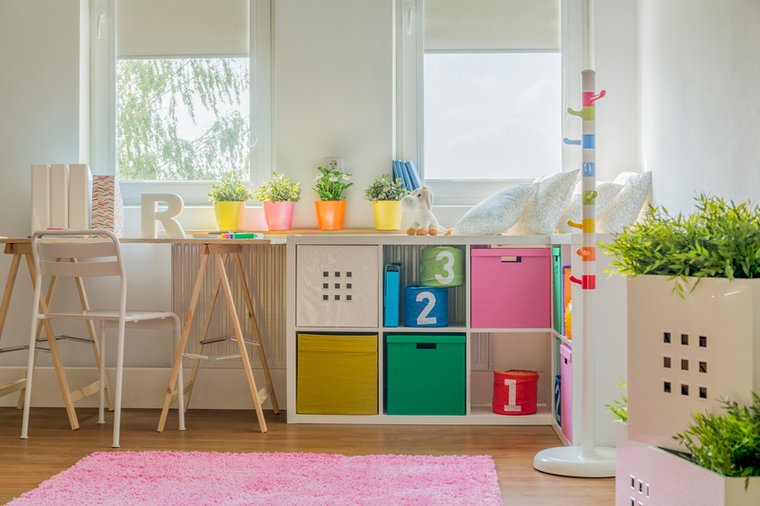

“New year, new me” is so 2017. We thought we would change things up a bit because frankly, 2018 deserves better and so do you. This is the year to be bold. In fact, if there was a color named “bold” we would recommend it for your kitchen remodel. Once a month we will be showing you a different way to go bold with your home. These will be easy, inexpensive changes to add character and life to various rooms and spaces.
Our first? Colorful, crafty storage. Many New Year’s Resolutions include decluttering your life. Not only is this great for your house, but it can also be very therapeutic. However, instead of putting the same old containers or storage back on your shelves, opt for a modification. For those of you who are more DIY, try painting the lids of mason jars your favorite bright color. If you are more of an online shopper than DIY queen, we found some storage options that are cute and simple: These are the perfect solution to keeping your kids playroom tidy, while still feeling fun friendly. Try these for your office space that feels a little dull and in need of inspiration. If you’d rather do something more permanent, paint the back wall of your storage shelves, it adds dimension and character. If you don’t want to permanently color your bookcases, try fabric or wallpaper. If you choose wallpaper, tie in the color with the items that are filling the shelves (hint: match to your mason jars).
We’ve mandated that 2018 is the year to be bold, but to also have fun. So start by adding some color to otherwise boring old storage spaces! If you go bold with your home each month this year, you can bet that the ending of 2018 will be sweeter than last.
For more information on Windermere Evergreen and our team, please contact us here.
3 Garden Alternatives for a Patchy Lawn
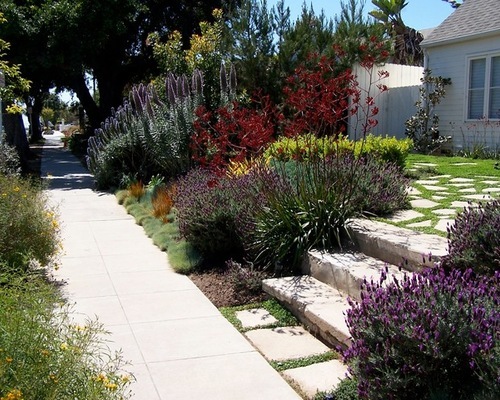

I’ve met with more than one client while standing on a struggling lawn. “I keep trying,” they tell me, “but the grass won’t grow.” I tell them that maybe this means there’s another option, something even better than a lawn. Maybe it’s time for a garden. And it’s as if I’d just told them the secret to eternal happiness and long life.
Still Have Hope for Greener Grass? Ask a Lawn Professional
Don’t keep tossing grass seed on your bare lawn. Instead, put a garden there, or at least plant something that has a better chance of surviving. Here are three situations where a languishing lawn may call for a new vision — a self-supporting garden that wildlife will love to call home.
BE Landscape Design, original photo on Houzz
1. Blazing sun. Whether it’s out in the open on a flat grade, on a slope or atop a hill, lawn just never does well in hot sunshine. It burns away each August, opening up holes for advantageous weeds to move in.
You could seed or plant drought-tolerant native grasses like sideoats grama and blue grama (Bouteloua curtipendula and B. gracilis) and little bluestem (Schizachyrium scoparium). Or try sedges like shortbeak and Bicknell’s (Carex brevior and C. bicknellii). And while you’re at it, get some flowers. If it’s a larger area, think self-sowers like upright prairie coneflower (Ratibida columnifera), black-eyed Susan (Rudbeckia hirta) and skyblue aster (Symphyotrichum oolentangiense). For smaller areas, ‘October Skies’ aromatic aster (S. oblongifolium ‘October Skies’) works well, along with pale purple coneflower (Echinacea pallida), purple and white prairie clover (Dalea purpurea and D. candida), many species of Baptisia, and more.
Try to create a base layer of sedges and grasses that will work to mulch and cool the soil, adding clumps or drifts of flowers among them for seasonal interest and pollinator action.
Attract Pollinators for a Productive Edible Garden
2. Ponding water. After a heavy — or even moderate — rain, water may collect in an area of your lawn, drowning grass for days or even weeks. When that water finally vanishes, you’re left with barren soil that’s both unsightly and open to weed invasion.
This sounds like an area where rain garden plants may work. These are the plants that thrive in the boom-bust cycle of spring and fall flooding with dry summers. Swamp milkweed (Asclepias incarnata), Virginia mountain mint (Pycnanthemum virginianum), Joe Pye weed (Eutrochium purpureum), switchgrass (Panicum virgatum), muskingum sedge and fox sedge (Carex muskingumensis and C. vulpinoidea), New England aster (Symphyotrichum novae-angliae), queen of the prairie (Filipendula rubra), white turtlehead (Chelone glabra), and Culver’s root (Veronicastrum virginicum) are all good options.
If it’s a large area and you want privacy, a shrub hedgerow is an option. Plant redtwig dogwood (Cornus sericea), red or black chokeberry (Aronia arbutifolia and A. melanocarpa), or elderberry (Sambuca sp.) — they will slowly sucker to form a massive bird and native bee habitat.
3. Dark or dappled shade beneath a tree. Trees are great: They cool homes, clean the air and provide for so much wildlife. Oaks (Quercus spp.), maples (Acer spp.), elms (Ulmus spp.) and willows (Salix spp.) are near the top in serving a diversity of pollinators and other insects, specifically, that use the leaves and blooms at different life stages. But grass doesn’t often grow underneath these tall trees — mostly because they cast dense shade.
If you have rich, moist to medium soil, there are many spring ephemerals to choose from: Dutchman’s breeches (Dicentra cucullaria), trillium (Trillium spp.), shooting star (Dodecatheon meadia), yellow trout-lily (Erythronium rostratum) and Virginia bluebells (Mertensia virginica).
For gardeners with dry clay soil, early meadow-rue (Thalictrum dioicum), zigzag goldenrod (Solidago flexicaulis), calico aster (Symphyotrichum lateriflorum) and wild geranium (Geranium maculatum) are solid choices. Sprengel’s sedge (Carex sprengelii) is a grass-like option.
If you don’t want a large bed of strictly plants, weave a path of mulch or stepping stones through. Place a chair or two, a hammock, or a potting bench.
It’s always important to carefully research the plants before you buy them to make sure that they suit your conditions. Clay soil is different from sand or rocky loam, and while some plants may do well in several kinds of soil and light conditions, others won’t. You may also prefer plants that create short drifts rather than tall ones, or vice versa, or clumping plants instead of aggressive spreaders.
When you take the time to carefully match the plant to the site and your region, you’re setting yourself up for more success and beauty with less maintenance — unlike sowing grass seed over the same area year after year.
By Benjamin Vogt, Houzz
For more information on Windermere Evergreen please contact us here.
6 Clever Ways to Disguise Trash Bins
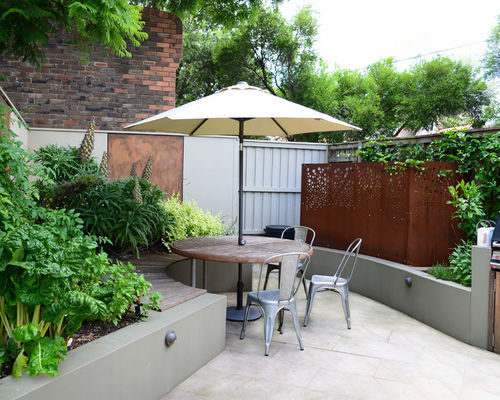
 You probably don’t give much thought to your garbage cans, other than remembering to put them out on the right day. But we all have to store our trash and recycling bins somewhere, and doing so can be a challenge on a smaller property, especially if you don’t want them to be an eyesore. If you’re struggling to find a stylish way to store your bins, check out these smart and inspiring ideas. Now, is it black or green bin day this week?
You probably don’t give much thought to your garbage cans, other than remembering to put them out on the right day. But we all have to store our trash and recycling bins somewhere, and doing so can be a challenge on a smaller property, especially if you don’t want them to be an eyesore. If you’re struggling to find a stylish way to store your bins, check out these smart and inspiring ideas. Now, is it black or green bin day this week?
Garbage Bins 1: Outhouse Design, original photo on Houzz
Choose a screen. The curved screen in the corner of this courtyard is an attractive feature in its own right, thanks to the decorative cutwork pattern, and offers an elegant way to hide ugly plastic bins from view.
By using a screen like this, you can section off as much of the garden as you need — to store bikes or garden equipment as well as bins. To blend in the structure even further, you could grow climbers up and over the screen or along the wall behind.
Related: Outdoor Chairs to Entertain in the Garden
Create a brick shelter. Built in red brick to match the house, and tiled with slate, this practical storage area blends with the property’s exterior and actually enhances the space with its character and interest. The look is mirrored in the raised bed at the front of the drive for a coordinated finish.
A custom compartment on the left neatly houses the bin, while two smaller storage compartments on the right make room for stacking recycling boxes.
Make it part of the garden. The aim of this front garden design was to create a wildlife haven, and rather than see the bins as an unsightly obstacle to be hidden away, the owners decided to make them integral to the design.
They created a sturdy wooden structure with a living roof that works as an extension of the garden and is planted with wildlife-friendly flowers and foliage.
Related: Create a Wildlife Haven With a New Bird Bath
Design it into an outbuilding. In a larger space, an open-sided outbuilding like this one is ideal for storing and hiding bins. It’s painted a heritage shade and is partly screened in front with evergreen topiary to create a visually appealing feature — a great way to smarten up a drab drive.
This idea would complement a traditional or cottage exterior, but if your style is more contemporary than country, you could choose a sleeker style, or paint it a darker shade to tie in with the exterior of your home.
Tuck it into a border. Can you spot the trash bins on this drive? They’re neatly tucked away in the wooden box to the left of this image, and the impact of the structure has been much reduced by positioning it in a decorative floral border and planting low standard trees right alongside it.
The structure also has a green roof planted with succulents to further disguise the box and make it as visually appealing as possible.
Build a clever storage wall. If space is limited, why not make your recycling containers work extra hard by turning their storage area into a boundary wall, as these smart homeowners have. This neat wooden shelter screens the bins from the road while creating a clean, contemporary-style wall.
Related: More Designer Tips to Boost Curb Appeal
By Victoria Harrison, Houzz
For more information on Windermere Evergreen please contact us here.
6 Ways to Personalize a White Kitchen
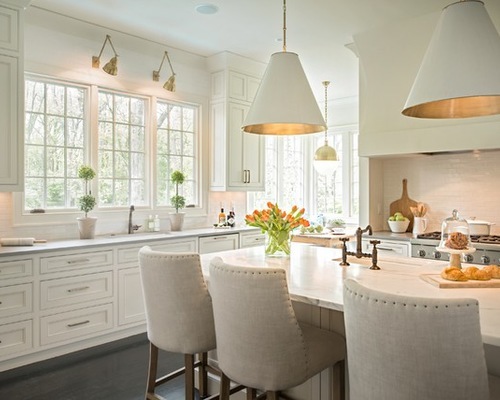

White-on-white kitchens have been a classic look for many years. Why does this trend endure? For starters, white connotes cleanliness, makes small spaces appear larger, and brightens rooms that are naturally dark.
Although many all-white kitchens are just lovely, some can appear a bit stark or cold. To help clients warm up their white, I recommend a variety of strategies, such as mixing metals and adding contrasting paint, fabric or wood. Read on for inspiration for personalizing your white kitchen so that it stands out from the crowd.
White Kitchen 1: Allard Ward Architects, original photo on Houzz
1. Warm metal accents. Copper, bronze, brass and polished nickel are just a few of the metals that can warm up an all-white kitchen. The gold sconces above the window and the white pendant lights, with their subtle hint of gold, add warmth and a touch of luxury to this all-white kitchen.
2. Color and metal. Moving beyond metallics alone, a single contrasting color when combined with metals can create drama in a white kitchen. In this photo, a modern white kitchen intermingles black pendants and countertops with gold seating. This combination contributes to the room’s sleek contemporary look.
3. Wallpaper. I love wallpaper, especially in kitchens. Wallpaper can introduce color, movement and dimension to a white kitchen. When applied to a lone wall, wallpaper can create a dynamic focal point, as shown in this photo. The bright white cabinets and crisp white walls are softened by the shades of blue in the fish swimming on the side wall. This kitchen’s under-the-sea motif is enhanced by the blue tile on the back wall and the sea urchin-shaped pendant lights.
4. Colorful island. Wood-stained islands often appear in white kitchens because of the richness and contrast they bring. This kitchen shows a creative alternative, pairing a chartreuse island with a chartreuse Roman shade. Together they lend a whimsical, personalized feel. To give your white kitchen a personal touch, consider painting your island your favorite color.
5. Tile rug. Layering in a rug is a great way to introduce color and texture to an all-white kitchen, but some clients worry that a rug could be an added source of dirt as well as a possible tripping hazard.
This clever kitchen resolves both issues with a tile rug instead of a fabric one.
6. Backsplash. A tile backsplash also can bring color and texture to your white kitchen. But who says a backsplash must be tile? This kitchen has a counter-level window in lieu of a tile splash. The window faces a luscious succulent garden, thus creating a green vista for an otherwise monochromatic kitchen.
By Barbra Bright, Houzz
For more information on Windermere Evergreen, please contact us here.
25 Ways to Make the Most of Small Spaces
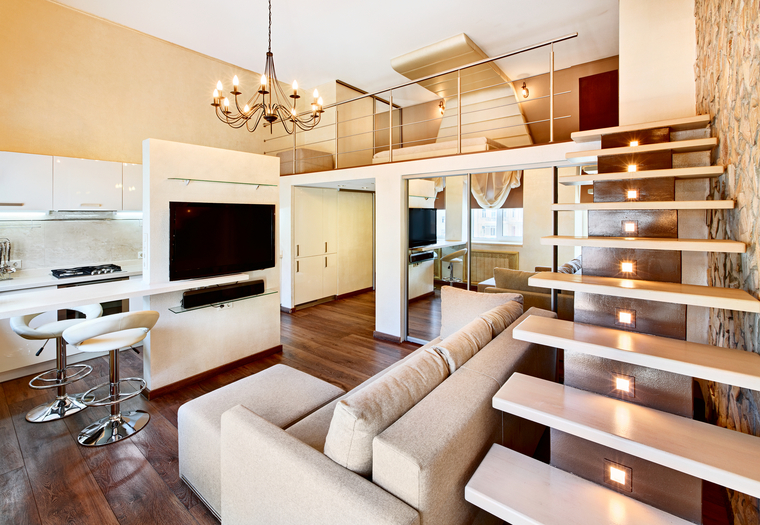

Suburban homes—with their large spaces, big yards, and separate bedrooms for every child—will always be popular with families, especially families of four or more. But there’s also a contingent today that’s eager to live in a dense urban setting: a high-rise condominium in the downtown core, a small home in an urban neighborhood, a small apartment, or even a shared housing arrangement. For those people, designing, furnishing, and organizing these living spaces will require a very different approach.
Urban living spaces are usually much smaller than suburban homes, which means, if you use traditional furnishing and space-planning techniques, you’re bound to be frustrated by the outcome. But with a little planning and creativity, you can create a fully functional space that belies its size.
Small-space planning ideas
- Start with the biggest, most important piece in each room (the sofa, the dining room table, the bathroom sink, etc.), then plan the rest of the space around that item.
- Focus on the needs of those who will be living in the home full-time. Leave any accommodations for guests until later.
- Work to make every space multifunctional (e.g., a kitchen island that can also be used for eating; a home office that can also function as a TV room and/or guest room).
- Look for any opportunity to increase the amount of sunlight. Install glass doors and skylights, and leave windows unobstructed.
- The fewer walls separating spaces, the more open and spacious it will appear.
- Traditional staircases are an inefficient use of space. If you’re designing from the ground up, consider a spiral staircase instead.
- Light paint colors (especially white) will make a room look more spacious. The combination of light walls with a dark floor will magnify the effect even more. Consider painting one wall a contrasting color to create a stylish focal point.
Furnishing solutions for small spaces
- Your furnishings should be small mobile and, when possible, stackable. That way, spaces can be quickly reorganized to suit different situations.
- Furnishings that blend with the colors of your walls or floors (or are transparent) will make the space appear less cluttered. To add personality and warmth, accentuate with colorful throw pillows and rich fabrics.
- If you keep most furnishings against the walls, traffic flow will be improved, and it will make rooms feel larger.
- Furnishings that hang from the walls or have legs will also create the illusion of more space.
- In many cases, bench seating is better than individual chairs, because benches can accommodate more people and can be used as side tables when no one is sitting on them.
- Instead of a coffee table, consider small side tables. Instead of a full-size sofa, try a three-seat version, or even a love seat (just two cushions).
- A large, wall-mounted mirror will make the space appear larger.
- An open-sided bookshelf can do double-duty as an interesting room divider. Leaving it half empty will allow natural light to shine through.
- A table on wheels is good for the kitchen. Use it as an island in the center of the kitchen or roll it to the side and use is as a side counter.
- Consider using an under-counter refrigerator, together with an under-counter freezer, instead of one large, freestanding unit.
- In small spaces, there is no room for furnishings you don’t love. If something isn’t getting used much, or if you don’t really care for it, get rid of it.
Organizing small spaces
- The best furnishings are those that include storage space (a dining room table with drawers; an ottoman with a hollow interior; a bed that sits on a storage unit).
- Bookshelves and other wall-storage systems should be thin and as tall as possible to maximize storage while minimizing the amount of floor space used.
- Storage pieces with doors keep small rooms from looking cluttered and unkempt. Even glass doors can help achieve this effect.
- Remove food goods from their air-filled boxes and bags and store them in space-saving, stackable containers.
- Store larger things (like a vacuum cleaner, electronics, etc.) behind a free-standing decorative screen.
- A professionally designed closet storage system can double, and even triple, the space for your clothes. Removing the door(s) to the closet will ease access.
- Wall-mounted hooks are ideal for coats and much more. Pot racks are great for freeing up valuable cabinet storage space in the kitchen.
Many people think you need to sacrifice in order to live in a small space. But with these suggestions, you can simply adapt and enjoy your home to the fullest.
For more information on Windermere Evergreen please contact us here.
 Facebook
Facebook
 Twitter
Twitter
 Pinterest
Pinterest
 Copy Link
Copy Link
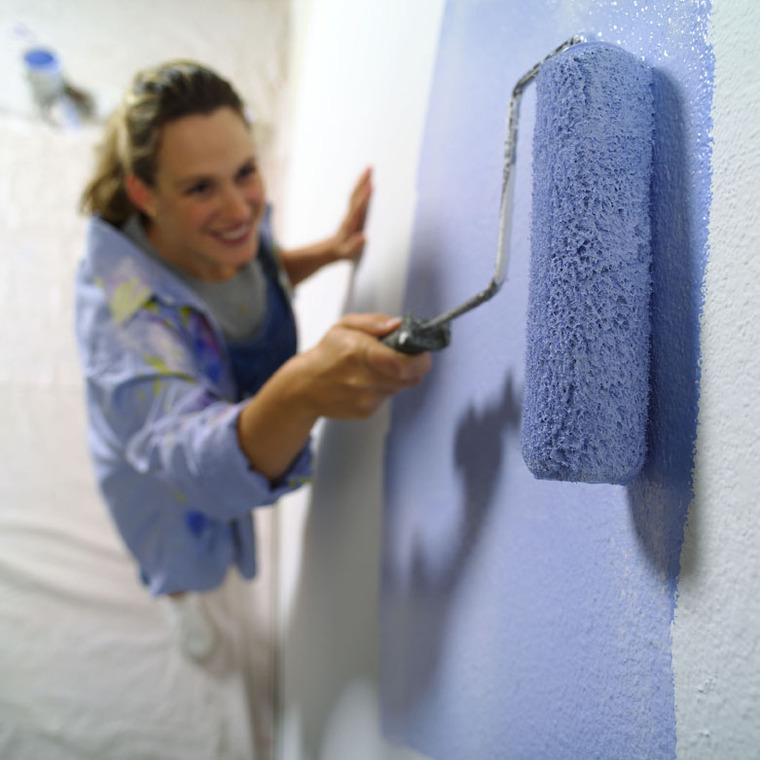
 One of the most frequent questions interior designers hear is how to choose colors for a home. We all love color, but some people are afraid of using color in their home. Many find they fear committing to a certain color scheme or making a mistake after it is all done. Here are some ideas to help to get you started.
One of the most frequent questions interior designers hear is how to choose colors for a home. We all love color, but some people are afraid of using color in their home. Many find they fear committing to a certain color scheme or making a mistake after it is all done. Here are some ideas to help to get you started.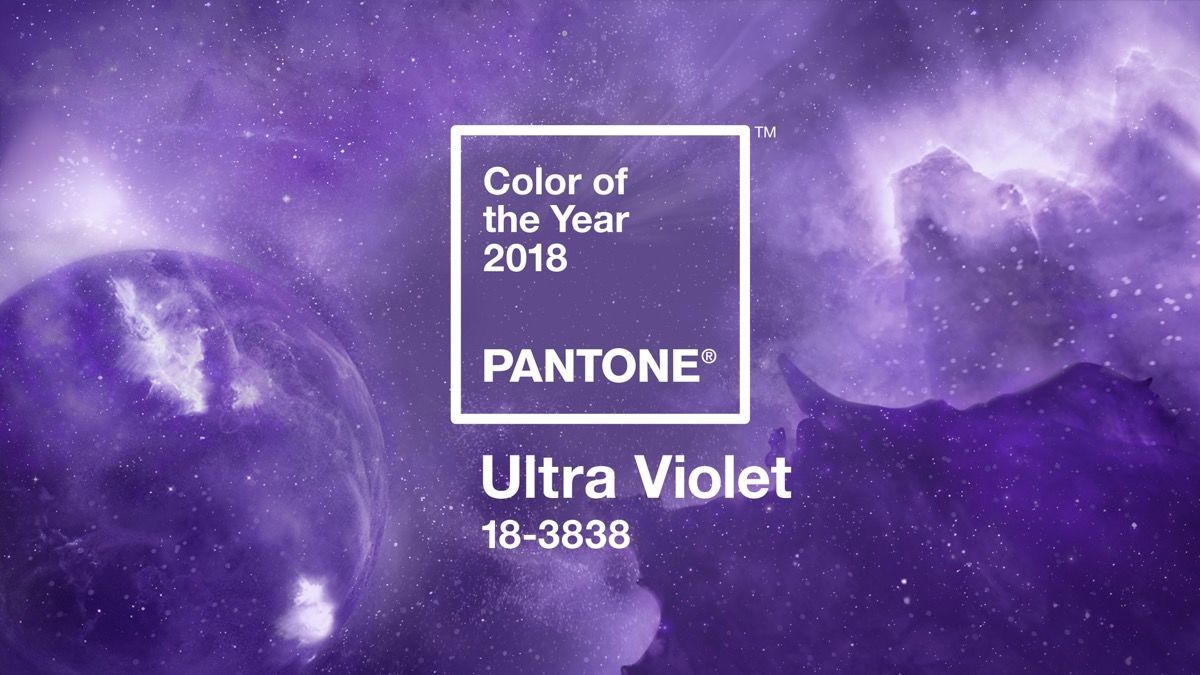

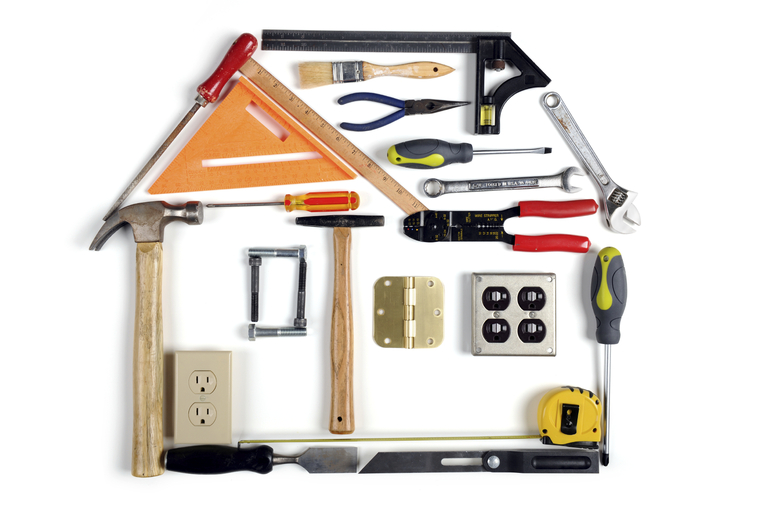
 Nothing in life lasts forever – and the same can be said for your home. From the roof to the furnace, every component of your home has a life span, so it’s a good idea to know approximately how many years of service you can expect from them. This information can help when buying or selling your home, budgeting for improvements, and deciding between repairing or replacing when problems arise.
Nothing in life lasts forever – and the same can be said for your home. From the roof to the furnace, every component of your home has a life span, so it’s a good idea to know approximately how many years of service you can expect from them. This information can help when buying or selling your home, budgeting for improvements, and deciding between repairing or replacing when problems arise.